Click the card below to follow Arm Technology Academy
This issue recommends the book “Principles and Application Design of Microprocessor Systems” written by Chen Yanhui, Feng Lei, and Kang Jin from Xi’an University of Electronic Science and Technology. The book was published in April 2022 by Xi’an University of Electronic Science and Technology Press and has been selected as a result of the Ministry of Education’s industry-university cooperation project funded by STMicroelectronics’ China University Program.
With the rapid development of Arm series microprocessors, Arm-based microcontrollers have emerged, occupying most of the consumer electronics market and gaining wide application in industrial control and specialized fields, especially with the arrival of the Internet of Things era, making embedded systems the “darling” of contemporary industries. It is imperative to replace the 8086 with Arm processors to explain microcomputer principles. Although many people use microprocessors, few can use them well, mainly due to a lack of in-depth understanding of the principles of microprocessors and the inability to closely integrate theory with practice, especially the unclear relationship between C language and microprocessor operations. Everyone hopes to have a textbook that combines theory and application, allowing beginners to grasp the principles and use them to understand programs, thus the “Principles and Application Design of Microprocessor Systems” was born.
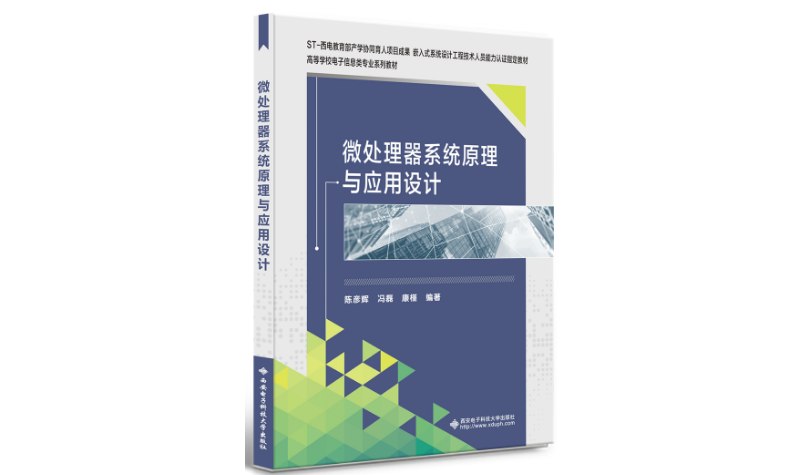
1. Content Introduction

The book comprehensively introduces the basic methods of working principles and application design of microprocessor systems, mainly starting from the structure of microprocessors to introduce assembly instructions, and from assembly instructions to introduce C programming, aiming to help readers deeply understand the working principles of microprocessors and master the essence of program design, improving practical design and debugging capabilities through peripheral driver program design and minimal system design.
This book can be used as a textbook or teaching reference for courses such as “Microcomputer Principles” and “Embedded System Programming” in electronic information-related majors in higher education institutions, and can also be referenced by teachers and students from other majors as well as relevant engineering and technical personnel.
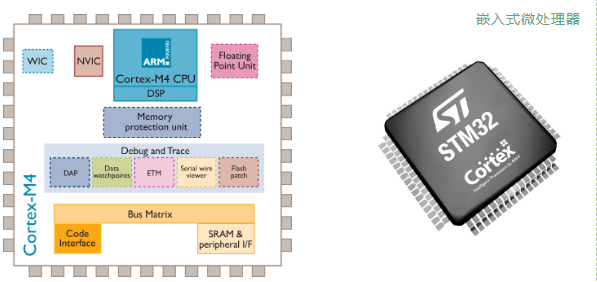
2. Book Features
-
ST – Xi’an University Education Ministry Industry-University Cooperation Project Results;
-
Designated textbook for embedded system design engineers’ competency certification;
-
A textbook that combines principles and applications, allowing beginners to grasp principles and use them to understand programs;
-
Provides free PPT courseware and micro-course resources.
3. Book Directory and Introduction
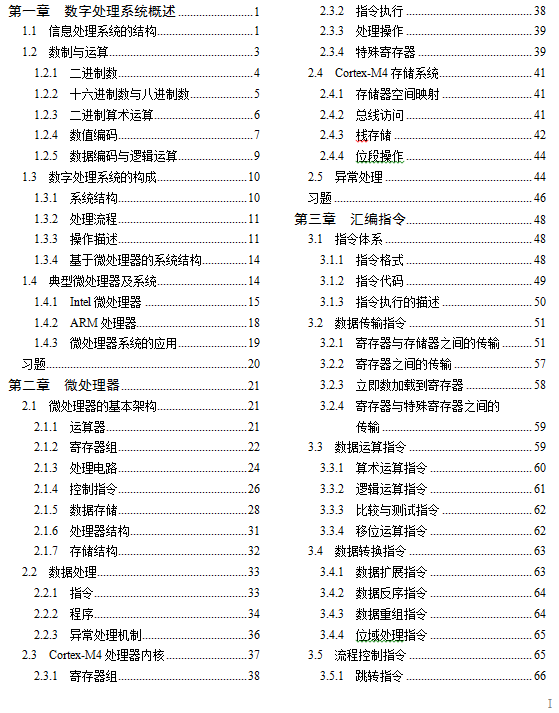
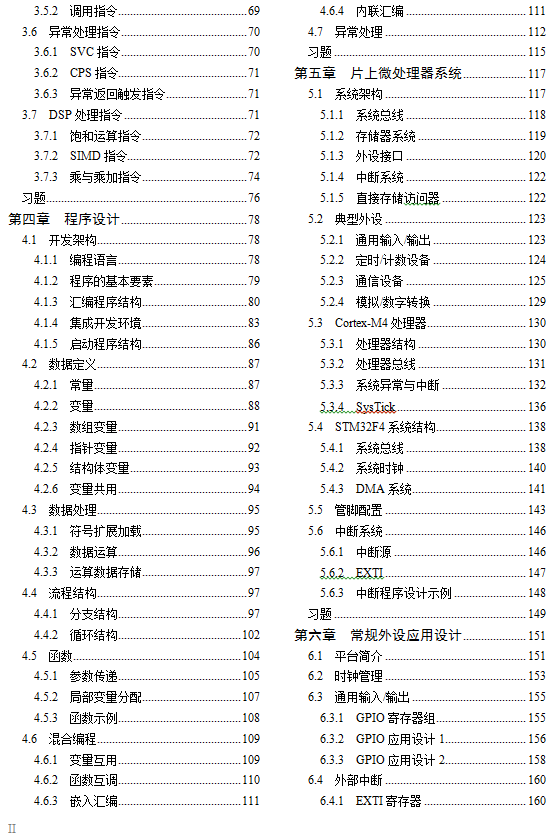
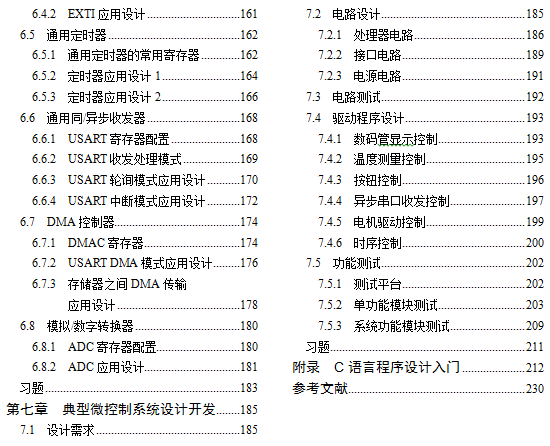
Chapter 1 introduces the microprocessor system from the perspective of digital information processing, while providing the numeral representation and basic rules of binary operations used in microprocessors, and introduces the history of microprocessors and systems development.
Chapter 2 outlines the microprocessor architecture and operation mechanism step by step from the perspective of information processing system design, following the order of arithmetic unit, registers, controller, instruction generation and encoding, instruction reading and decoding, ultimately providing a complete architecture of conventional microprocessors. By analyzing the core structure, storage system, and exception handling mechanism of the currently popular Cortex-M4 processor, readers can gain an in-depth understanding of the construction of microprocessors and the mechanism of instruction execution, facilitating better understanding and application of instructions later.
Chapter 3 introduces concepts and processes related to instructions and their operations, and presents the most common instructions of microprocessors from four aspects: data transfer, data calculation, flow control, and exception handling; it analyzes the specific operation methods of processors using a combination of charts, enabling readers to “see instructions and understand operations, think operations and know instructions”; it also introduces commonly used digital signal processing instructions, facilitating program design for readers engaged in signal processing and data communication work.
Chapter 4 introduces the basic methods of program design, including conventional variable definitions, assignments, calculations, branching jumps, calls, etc., while describing the program design process, exception handling programming, and mixed programming in detail. Most of the content is described in parallel using both assembly language and C language, which effectively helps readers establish the connection between C statements and microprocessor operations, allowing them to understand the principles and processes of statement execution and to comprehend software execution from the perspective of microprocessor structure.
Chapter 5 introduces the basic structure and principles of on-chip microprocessor systems, the basic components and key parts of the Cortex-M4 processor, the basic composition and typical peripheral principles of the STM32F401, and the most commonly used interrupt system structure and application development, enabling readers to master the typical structure and composition of microprocessor systems as well as the working principles of typical peripherals.
Chapter 6 introduces peripheral operations, i.e., how to achieve operational control, status reading, parameter configuration, and data transmission and reception by reading and writing the registers in peripheral interfaces, while interspersing the applications of polling and interrupts; using the STM32F401 platform, it introduces the configuration and application design of conventional peripherals such as clock management, GPIO, EXTI, timers, USART, DMAC, ADC, etc.
Chapter 7 describes how to design and develop a simple typical microcontrol system based on requirements, detailing key aspects such as circuit design, device driver development, functional debugging, and simulation, enabling readers to master the design and development methods of microprocessor systems, the conventional circuit design of microcontrol systems, the basic framework of driver software design, and hardware debugging and integration.
As a foundation in C language is required to study this book, the appendix introduces an introduction to C programming.
4. Book Purchase
Book purchase link:https://item.jd.com/13130021.html
Learning videos and book PPT downloads:https://mp.bookln.cn/q?c=120IV4794BF
Free application link for teachers:https://jinshuju.net/f/BnQhXU
Follow Arm Technology Academy
 Click below“Read the original text”, to see more excellent books recommended by Extreme
Click below“Read the original text”, to see more excellent books recommended by Extreme